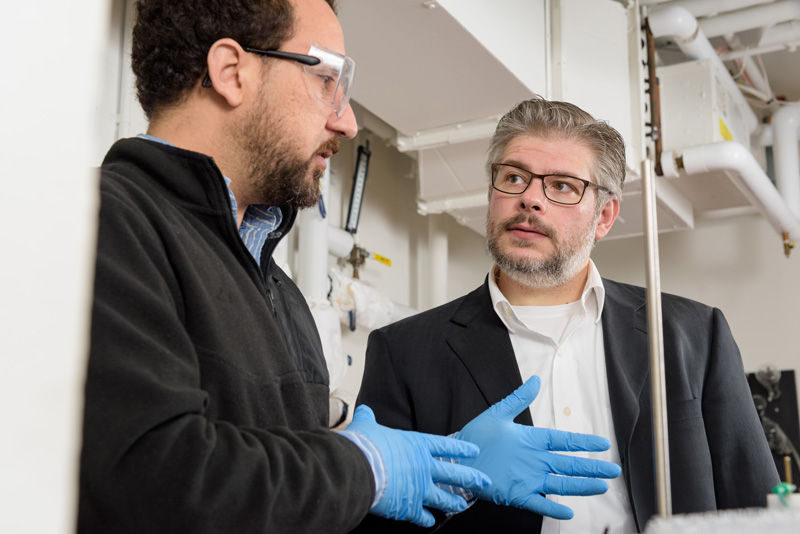
Joel Rosenthal
Department of Chemistry and Biochemistry,
University of Delaware, Newark, DE, 19716
Abstract: Development of new electrosynthetic tools and methods has attracted much interest
in recent years as a means to prepare chemicals and materials that are either
inaccessible or whose preparation is inefficient using traditional thermal chemistries. In
addition to opening up routes to new compounds and materials, implementation of
electrosynthetic strategies can enable reduced waste streams and more streamlined
synthetic routes, while circumventing the use of expensive, acutely toxic, and highly
reactive reagents. Driving synthetic chemistry with electric current as opposed to heat
also represents a direct way to power chemical processes using renewable energy (such
as electricity from wind or sunlight), and therefore provides an opportunity for more
sustainable chemical syntheses and renewable energy storage.
Our lab has developed efficient electrosynthetic routes to prepare commodity
chemicals and fuels, fine chemicals, and new inorganic materials. In this presentation, we
will provide an overview of our efforts in each of these areas, which include 1) controlling
the electrochemical reduction of carbon dioxide to switch between the formation of either
formic acid or carbon monoxide depending on the electrolysis conditions; 2) the
electrosynthesis of α,β-ynones en route to polyphenols that show anti-cancer and anti-
HIV activity; and 3) the electrochemical synthesis of new classes of metal-organic
frameworks and other porous materials that are based upon non-traditional metal ions
and organic linkers. Throughout the presentation, we will show how the ability to drive
challenging transformations that require the activation of strong bonds or access to highly
reactive chemical intermediates is greatly facilitated through an electrochemical
approach. We will also demonstrate how controlling the chemical dynamics and
environments at working electrode interfaces can be leveraged to promote interesting
energy conversion processes, solar fuel generation, and porous material construction.
Implications for the future development of efficient electrosynthetic strategies and
platforms will also be discussed.
